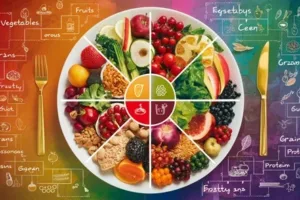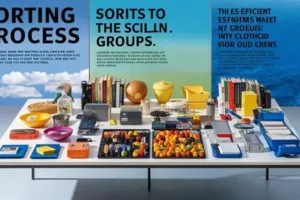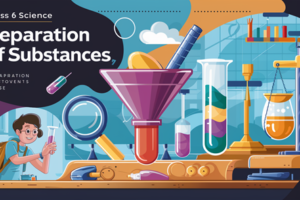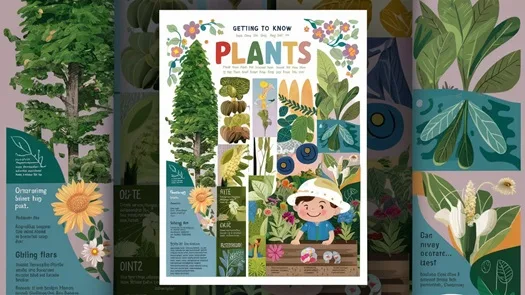
Class 6 Science Chapter 4 – Getting to Know Plants
Getting to Know Plants -Introduction
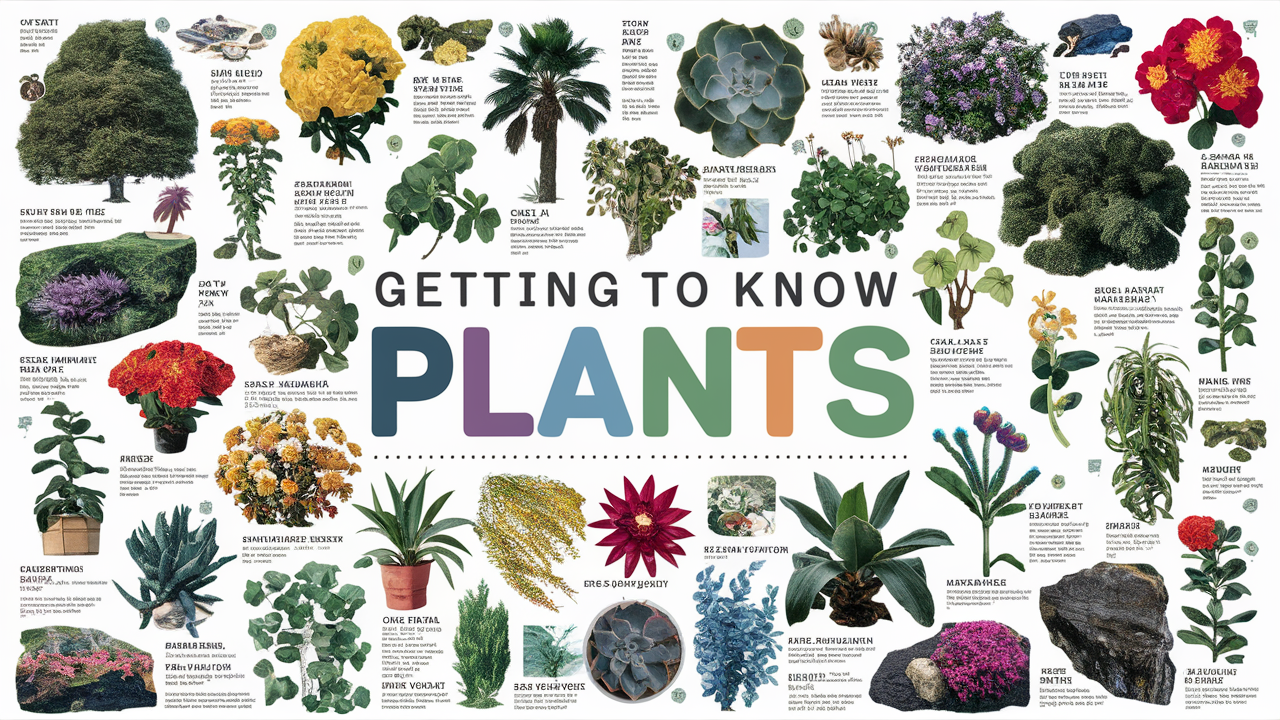
Introduction to Plants
Plants are all around us. They help sustain life on earth by creating food and giving out oxygen that we breathe in.
Plants
- Plants are the immovable living organisms all around us.
- They are the primary food providers.
- They are mostly green in colour and use the sun as a source of energy to make food.
Herbs, shrubs and trees
- Herbs are the smallest plants and do not have woody stems.
- Shrubs are slightly larger than herbs.
- Trees are the largest plants and can have large and thick woody stems.
Creepers and Climbers
Creepers and Climbers are types of plants which need support to grow.
Algae and Mosses
- Algae and mosses are the most primitive or simple plants.
- Algae are found mostly floating on water, and mosses are seen on surfaces, rocks or bark of trees in humid conditions.
Leaf
Leaf
The leaf is the most important part of the plant. Most leaves of plants are green in colour. There are different shapes and sizes of leaves.
Different Parts of a Leaf
Leaf has different parts:
- the midrib
- the veins
- the leaf blade/lamina

Transpiration
Transpiration is the loss of water from aerial parts of the plant, especially from leaves. Water is lost in the form of water vapours through tiny openings called stomata, present on the underside of leaves.
Photosynthesis
Photosynthesis is the process by which the plant converts carbon dioxide and water into food using sunlight as the energy source. Photosynthesis happens in green leaves.
Root
Root
The root is the part of the plant that is found under the soil. It provides stability to the plant and also absorbs water and minerals.
Types of Roots
There are two types of roots; tap root and fibrous root. Tap roots are seen in large trees and shrubs. Fibrous roots are common in herbs.
Relation Between Different Types of Leaves and Roots
Leaf venation and the type of roots in a plant are related. Plants with fibrous roots have parallel venation in their leaves. Plants with tap roots have reticulate venation in their leaves.
Stem
Stem
Stem is the main part of the plant. It gives structural support and helps in transportation of the water, minerals and food. The leaves and branches originate from the stem.
Flower
Flower
A flower is the reproductive part of a flowering plant. The only function a flower serves is reproduction. Different parts of a flower have different functions.
Different Parts of Flowers and Their Function
The flower is made up of four important parts. The sepals, the petals, the male stigma and the female style.
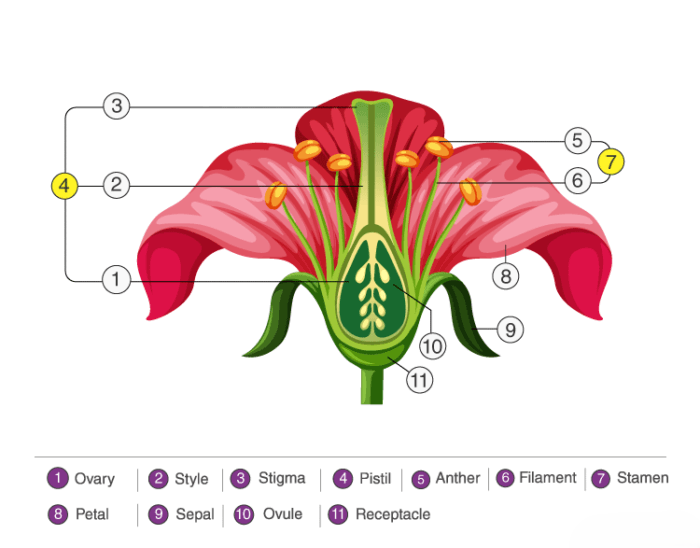
Reproduction in Flowering Plants
Reproduction in flowers happens when the pollen grain from the male androecium fuses with the eggs in the female style.

Seed
A seed is an enclosed dormant embryo of a plant. They are found in the fruits and, when sown, give rise to a new plant.
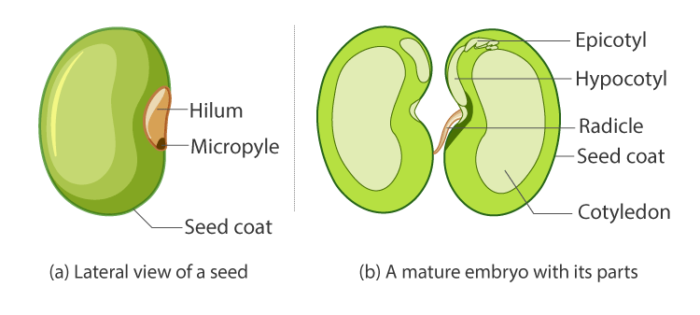
Seed
Parts of a seed
A seed is made up of different parts. The plumule gives rise to the shoot, and the radicle grows into the roots. The cotyledons provide nutrition.
Types of seeds
There are two types of seeds on the basis of the number of cotyledons. Monocots have single cotyledon. Dicots have two cotyledons.
Food
Food: Fruits and Vegetables
- Fruits are very different from vegetables.
- Fruits always develop from a flower, while vegetables are parts of the plant that are edible for us. It could be the shoots, the leaves, the roots or even the fruits.
- Tomato is a classic example of a vegetable as a fruit too.
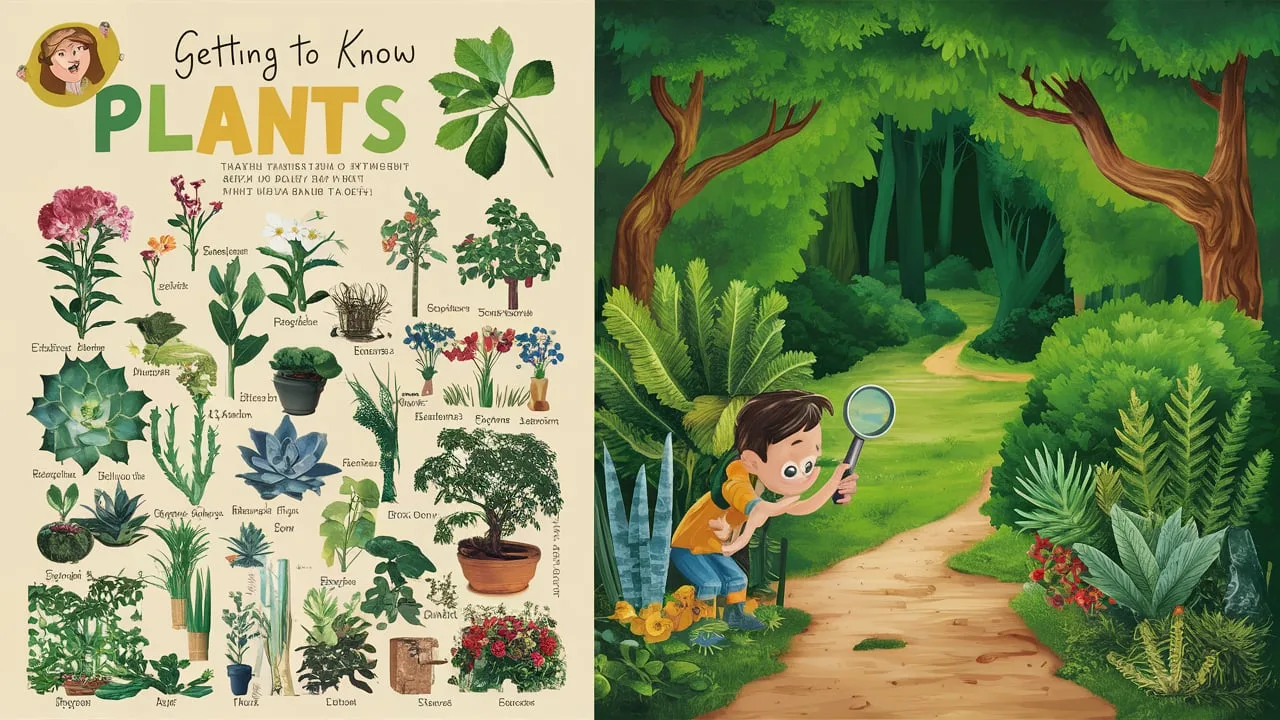
Chapter 7 Exercise Questions
1. Correct the following statements and rewrite them in your notebook.
(a) Stem absorbs water and minerals from the soil.
(b) Leaves hold the plant upright.
(c) Roots conduct water to the leaves.
(d) The number of petals and stamens in a flower is always equal.
(e) If the sepals of a flower are joined together, its petals are also joined together.
(f) If the petals of a flower are joined together, then the pistil is joined to the petal.
Solution:
a) Roots absorb water and minerals from the soil.
b) Stem holds the plant upright.
c) Stems conduct water to the leaves.
d) The number of petals and stamens in a flower may not always be equal.
e) If the sepals of a flower are joined together, its petals are separate.
f) If the petals of a flower are joined together, then the pistil may or may not be joined to the petal.
2. Draw (a) a leaf, (b) a taproot and (c) a flower you have studied for Table 7.3
Solution:
a)

Leaf
b)

Tap root
c)

Flower(Rose)
3. Can you find a plant in your house or in your neighbourhood which has a long but weak stem? Write its name. In which category will you place it?
Yes, the lauki (gourd) plant needs support. It is a climber.
4. What is the function of a stem?
Following are the functions of a stem
- Stems hold the plant upright.
- Stems conduct water to the leaves.
- Stems conduct food from leaves to other parts of the plant.
5. Which of the following leaves have reticulate venation?
Wheat, maize, tulsi, grass, china rose, coriander (dhania)
China rose, Tulsi, and coriander have reticulate venation.
6. If a plant has fibrous roots, what type of venation do its leaves have?
If a plant has a fibrous root, its leaves have parallel venation.
7. If a plant has leaves with reticulate venation, what kind of roots will it have?
If a plant has leaves with reticulate venation, it will have a tap root.
8. Is it possible for you to find out whether a plant has taproot or fibrous roots by looking at the impression of its leaf on a sheet of paper?
Yes, it is possible to find whether a plant has taproot or fibrous roots by looking at the impression of its leaf on a sheet of paper.
9. What are the parts of a flower?
Parts of a flower:
a) Sepals
b) Petals
c) Stamens
d) Pistil
10. From the following plants, which of them have flowers?
Grass, maize, wheat, chilli, tomato, tulsi, peepal, shisham, banyan, mango, jamun, guava, pomegranate, papaya, banana, lemon, sugarcane, potato, groundnut
The plants which have flowers are grass, maize, wheat, chilli, tomato, tulsi, peepal, shisham, banyan (flowers lie inside its fruits), mango, jamun, guava, Pomegranate, papaya, banana, lemon, sugarcane, potato, groundnut
11. Name the part of a plant which produces food. Name the process.
Leaves produce food through a process called Photosynthesis.
12. In which part of a flower will you find the ovary?
The ovary is found in the lowermost and most swollen part of the pistil.
13. Name two plants in which one has joined sepals, and the other has separate sepals.
Plants with joined sepals – Datura and cotton
Plants with separate sepals – Rose and Lotus

